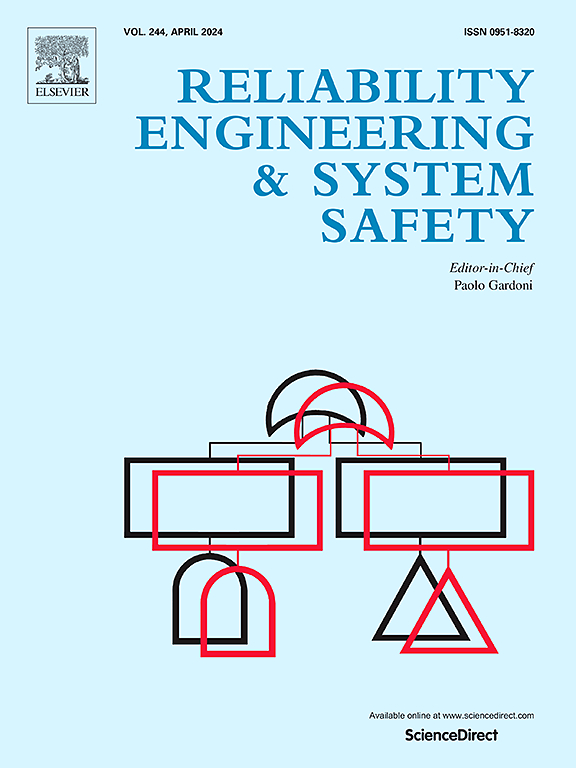Multi-agent-based failure modeling for uncrewed swarm systems considering cross-layer diffusion characteristics
IF 9.4
1区 工程技术
Q1 ENGINEERING, INDUSTRIAL
引用次数: 0
Abstract
Uncrewed swarm systems (USSs) are injecting renewed vigor into societal development and economic growth, and their failure modeling is crucial for ensuring the safety and stability of system operations. However, traditional modeling methods are insufficient for describing the cross-layer diffusion characteristics of USS failure. In this context, proposed here is a multi-agent-based failure modeling approach to establish the groundwork for analyzing USS failure. A failure modeling framework grounded in agent-based modeling methodology is developed to efficiently capture and organize the multi-layer failure information of a USS. Expanding on this framework, the interaction mechanism of agents is designed to delineate the operational processes and failure propagation paths of the USS. A dynamic clock failure model, structural functions, and functional constraint matrices are integrated effectively to describe the cross-layer failure behaviors of the components, subsystems, and nodes of the USS. Furthermore, a unified modeling approach is proposed to describe the failure propagation within and between nodes. Finally, a case study of a USS comprising 16 uncrewed aerial vehicles and eight satellites is conducted to validate the effectiveness of the proposed approach. The simulation results reveal that the electric distribution board, voltage stabilizer, and flight control board significantly influence the mission completion.
求助全文
约1分钟内获得全文
求助全文
来源期刊

Reliability Engineering & System Safety
管理科学-工程:工业
CiteScore
15.20
自引率
39.50%
发文量
621
审稿时长
67 days
期刊介绍:
Elsevier publishes Reliability Engineering & System Safety in association with the European Safety and Reliability Association and the Safety Engineering and Risk Analysis Division. The international journal is devoted to developing and applying methods to enhance the safety and reliability of complex technological systems, like nuclear power plants, chemical plants, hazardous waste facilities, space systems, offshore and maritime systems, transportation systems, constructed infrastructure, and manufacturing plants. The journal normally publishes only articles that involve the analysis of substantive problems related to the reliability of complex systems or present techniques and/or theoretical results that have a discernable relationship to the solution of such problems. An important aim is to balance academic material and practical applications.
 求助内容:
求助内容: 应助结果提醒方式:
应助结果提醒方式:


